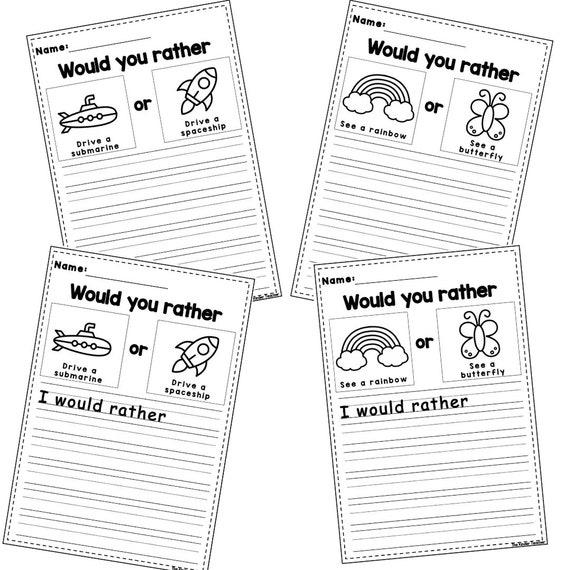Fostering Empathy in Today’s Children

In a world where kids can swipe right faster than they can say “I’m sorry,” cultivating empathy in today’s children can feel like trying to teach a cat to do algebra. But fear not, fellow adults, for there are ways to mold these tiny humans into compassionate beings. So grab your tissues, prepare for some eye-rolling, and let’s embark on a journey to foster empathy in the Snapchat generation.
Benefits of Teaching Empathy from a Young Age
It’s never too early to start teaching empathy to our little humans. And trust me, the benefits are endless!
First and foremost, **empathy helps build stronger relationships**. Just imagine a world where everyone could truly understand and connect with each other’s feelings. Drama? Gossip? Queen Bee Wars? *Gone*. The playground would be a utopian paradise of understanding and harmony.
Furthermore, **empathy fosters kindness and compassion**. When kids learn to put themselves in someone else’s shoes, they’re more likely to lend a helping hand or offer a comforting hug. *Random acts of kindness* would become the norm, and wouldn’t that be a beautiful sight to see?
And let’s not forget about **empathy’s impact on emotional intelligence**. Kids who are in touch with their own emotions and can understand and relate to others’ feelings are better equipped to handle life’s ups and downs. Emotional meltdowns? *Not in my realm*, says the young empathizer.

The Role of Parents in Modeling Empathetic Behavior
Being a parent means being the ultimate role model for your children. And when it comes to teaching them how to be empathetic human beings, your actions speak louder than words. Here are a few ways parents can model empathetic behavior for their kids:
- Show kindness to others: Whether it’s holding the door open for a stranger or offering a helping hand to someone in need, demonstrating acts of kindness can go a long way in teaching your children the importance of empathy.
- Listen actively: Instead of just waiting for your turn to speak, practice active listening when your child is talking to you. This not only shows them that you care about what they have to say but also sets an example of how to be a good listener.
- Practice gratitude: Expressing gratitude for the little things in life can help your children develop a sense of appreciation for the people around them. Try incorporating a regular gratitude practice into your family routine.
Remember, being empathetic doesn’t mean always agreeing with others or sacrificing your own needs. It’s about understanding and connecting with the feelings of others. So the next time you’re faced with a situation where empathy is needed, think about how you can model this behavior for your kids. After all, they’re watching and learning from you every step of the way!
Practical Strategies for Encouraging Empathy in Children
Teaching empathy to children can be a challenging task, but with the right practical strategies, it can be a fun and rewarding experience. Here are some creative ways to encourage empathy in your little ones:
- **Lead by example**: Children learn by observing, so be sure to demonstrate empathy in your own actions and interactions with others. Show them how to be kind and considerate towards others, and they will likely follow your lead.
- **Encourage perspective-taking**: Help your children see things from another person’s point of view. Ask them how they think someone else might be feeling in a certain situation, and encourage them to consider different perspectives.
- **Practice active listening**: Teach your children the importance of listening to others without interrupting or judging. Show them how to really pay attention to what someone is saying and respond with empathy and understanding.
Empathy is a valuable skill that can help children develop strong relationships and become compassionate members of society. By implementing these practical strategies in your everyday interactions, you can help your children grow into empathetic and caring individuals.

The Impact of Technology on Empathy Development
Technology sure has changed the way we communicate with each other, but has it affected our ability to empathize with one another?
One argument is that constant screen time and digital communication has made us more detached from the emotions of others. With emojis and acronyms replacing genuine facial expressions and tone of voice, it’s easy to misinterpret or overlook someone’s feelings. Plus, who needs to read between the lines when emojis can do all the talking for us?
On the other hand, technology has also opened up new avenues for empathy development. Take virtual reality, for example. With VR headsets, we can literally step into someone else’s shoes and experience their world firsthand. It’s like a high-tech empathy training program!
So, while technology may have its drawbacks when it comes to empathy, it also has the potential to revolutionize the way we understand and relate to one another. Who knew that a simple gadget could hold the key to unlocking our emotional intelligence?

Teaching Empathy in the Classroom
doesn’t have to be as difficult as deciphering hieroglyphics. With a little creativity and a lot of patience, you can turn your students into empathy superstars!
Here are some fun and unconventional ways to incorporate empathy into your lesson plans:
- Role-Playing: Have students act out different scenarios where they must put themselves in someone else’s shoes. Bonus points if they can nail the dramatic crying scene!
- Empathy Charades: Instead of acting out movie titles, have students act out emotions and have their classmates guess what they’re feeling. It’s like a game of emotions roulette!
- Walk a Mile in Their Shoes: Literally. Have your students swap shoes for a day to experience what it’s like to walk in someone else’s footwear. Just make sure they wear socks!
Remember, teaching empathy is all about helping students understand and connect with others on a deeper level. So get creative, have fun, and watch as your classroom transforms into a breeding ground for compassionate and understanding individuals!
Fostering Empathy Through Community Service Projects
Looking to boost your empathy levels while giving back to the community? Dive into some community service projects! Not only will you be helping others, but you’ll also be fostering a deeper sense of empathy.
When you volunteer your time and energy towards a cause, you start to see the world through a different lens. You’ll gain a new perspective on life and the struggles that others face. Plus, you might even make some new friends along the way!
So, how can you get involved in community service projects? Here are a few ideas to get you started:
- Help out at a local soup kitchen
- Organize a donation drive for a homeless shelter
- Volunteer at an animal rescue shelter
By participating in these projects, you’ll not only be making a difference in the lives of others, but you’ll also be fostering empathy within yourself. So get out there and start giving back!
Measuring Success in Empathy Building Programs
So, you want to measure the success of your empathy building program? Well, you’ve come to the right place! Let me break it down for you in a way that’s as clear as a freshly Windexed window.
First things first, you need to determine your goals. What are you trying to achieve with this program? Are you looking to increase employee satisfaction? Improve team collaboration? Or maybe just make everyone feel warm and fuzzy on the inside? Whatever it is, make sure you have a clear idea of what success looks like for you.
Next, **keep track of your progress**. This could involve collecting data on a variety of metrics such as employee engagement, feedback from participants, or even the number of times someone has asked for a tissue during a workshop. Remember, every little detail counts!
Lastly, don’t forget to **celebrate your successes**. Whether it’s throwing a party for hitting a milestone or simply giving yourself a pat on the back, acknowledging your achievements is key to maintaining motivation and momentum. Plus, who doesn’t love a good excuse to break out the confetti cannons?
FAQs
How can parents foster empathy in their children in today’s digital age?
One idea is to start a family tradition of smashing your kid’s iPad with a hammer every Sunday evening. Nothing says “empathy” like seeing your child’s tears as their precious screen time is destroyed.
What are some practical ways to teach empathy to kids who are always on their devices?
Have your child take breaks from their screens and go outside to play with others. If they show signs of withdrawal, just tell them that WiFi signals are strongest outdoors. They’ll be too busy searching for a signal to notice they’re actually interacting with real humans.
How can teachers promote empathy in the classroom?
Try incorporating group projects where students have to work together and rely on each other. And if that fails, just show them videos of kittens and puppies cuddling. If that doesn’t warm their hearts, they might actually be robots in disguise.
What role do books and stories play in fostering empathy in children?
Reading stories about different cultures and experiences can help children see things from different perspectives. And if that doesn’t work, just tell them that the library only lets kids with big hearts check out books. Peer pressure is a powerful motivator.
How can parents encourage their kids to show empathy towards others who may be different from them?
One way is to expose your child to diverse experiences and people. Take them on a trip to a foreign country where they don’t speak the language, and watch as they struggle to communicate with others. It’s like a crash course in empathy!
—
Spread the love!
Congratulations on taking the first step towards nurturing empathy in today’s children! Remember, empathy is like a contagious disease – the more you spread it, the better the world becomes. So go forth, be kind, and watch the world transform one empathetic child at a time. Keep fostering that empathy and who knows, maybe one day we’ll live in a world where everyone understands the importance of sharing the last cookie. Keep being awesome, empathetic humans!






